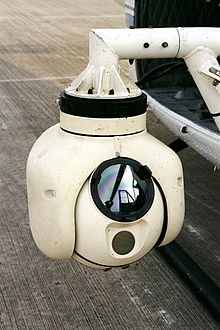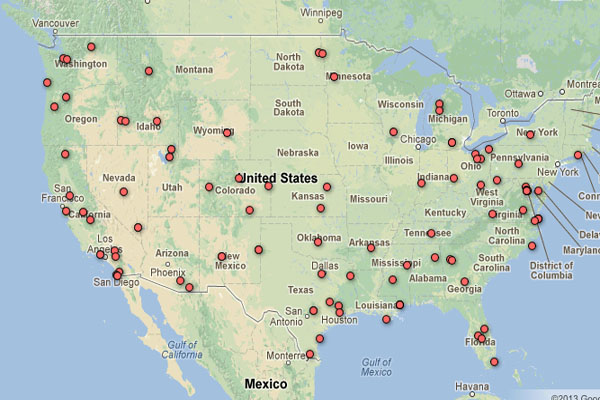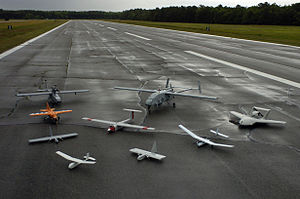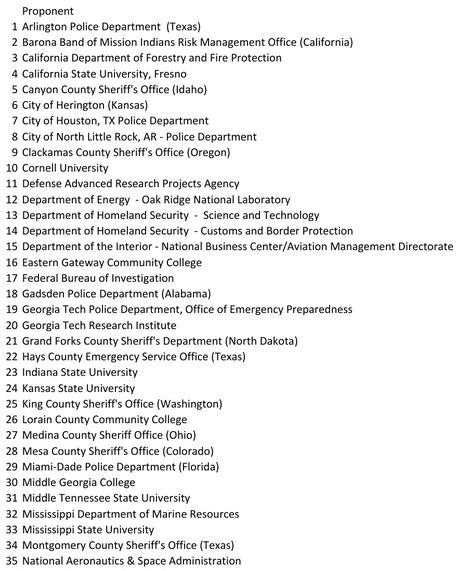
Is Your Town on the Map? FAA Releases New Drone List Of 81 New Applicants
Truther
Surveillance drones or unmanned aerial systems (UASs) raise significant issues for privacy and civil liberties. Drones are capable highly advanced surveillance, and drones already in use by law enforcement can carry various types of equipment including live-feed video cameras, infrared cameras, heat sensors, and radar.
.jpg)
Thanks to a provision in the FAA Modernization and Reform Act of 2012, drones use in the United States is set to expand rapidly over the next few years. The Act includes provisions to make the licensing process easier and quicker for law enforcement, and by 2015, commercial entities will also be able to apply for a drone authorization.

In January 2012, EFF sued the Federal Aviation Administration (FAA) under the Freedom of Information Act to determine which public and private entities had applied for authorization to fly drones. In response to the lawsuit, the FAA has released lists of the 60 public entities and 12 private drone manufacturers that have sought permission to fly drones in the US. The agency has also released several thousand pages of records related to the entities’ drone license applications.
The FAA has yet to provide information on how these drones will be used. EFF has also partnered with MuckRock, the open government organization, to conduct a “drone census” with the goal of determining just that. We have provided an easy-to-use form that ordinary citizens can use to file a public records request with their local police agency to ask what type of surveillance the agency plans to conduct with drones, if any, and what type of privacy protections it is providing its citizens.
Privacy law has not kept up with the rapid pace of drone technology, and police may believe they can use drones to spy on citizens with no warrant or legal process whatsoever. Several billsare currently going through Congress, which attempt to provide privacy protections to Americans who may be caught up in drone surveillance. As the numbers of entities authorized to fly drones accelerates in the coming years—the FAA estimates as many as 30,000 dronescould be flying in US skies by 2020—EFF will continue to push for transparency in the drone authorization process and work to ensure the privacy of all Americans is protected.

Credit: EFF
The Federal Aviation Administration has finally released a new drone authorization list. This list, released in response to EFF’s Freedom of Information Act (FOIA) lawsuit, includes law enforcement agencies and universities across the country, and—for the first time—an Indian tribal agency. In all, the list includes more than 20 new entities over the FAA’s original list, bringing to 81 the total number of public entities that have applied for FAA drone authorizations through October 2012.
Some of these new drone license applicants include:
- The State Department
- National Institute of Standards and Technology (NIST)
- Barona Band of Mission Indians Risk Management Office (near San Diego, California)
- Canyon County Sheriff’s Office (Idaho)
- Clackamas County Sheriff’s Office (Northwest Oregon)
- Grand Forks Sheriff’s Department (North Dakota)
- King County Sheriff’s Office (covering Seattle, Washington)
And several new entities in Ohio, including:
- Medina County Sheriff’s Office
- Ohio Department of Transportation
- Sinclair Community College
- Lorain County Community College
The list comes amid extensive controversy over a newly-released memo documenting the CIA’s policy on the targeted killing of American citizens and on the heels of news that Charlottesville, Virginia has just become one of the first cities in the country to ban drones. This new list should contribute to the debate over whether using domestic drones for surveillance is consistent with the Constitution and with American values.

As we’ve written in the past, drone use in the United States implicates serious privacy and civil liberties concerns. Although drones can be used for neutral, or even for positive purposes, drones are also capable of highly advanced and, in some cases, almost constant surveillance, and they can amass large amounts of data. Even the smallest drones can carry a host of surveillance equipment, from video cameras and thermal imaging to GPS tracking and cellphone eavesdropping tools. They can also be equipped with advanced forms of radar detection, license plate cameras, and facial recognition. And, as recent reporting from PBS andSlate shows, surveillance tools, like the military’s development of gigapixel technologycapable of “tracking people and vehicles across an entire city,” are improving rapidly.
EFF hopes this list will spur more people to ask their local law enforcement agencies about their drone programs. EFF has partnered with MuckRock to make it easier to ask for and disseminate this information. We also encourage people to ask hard questions of government officials about who is funding drone development in their communities and what policies the government will demand agencies follow if they fly drones. We need greater transparency and citizen push-back to protect Americans from privacy-invasive domestic drone use.
You can find the new list here. Below is just a partial list of 81 new applicants.
Contacts and sources:

